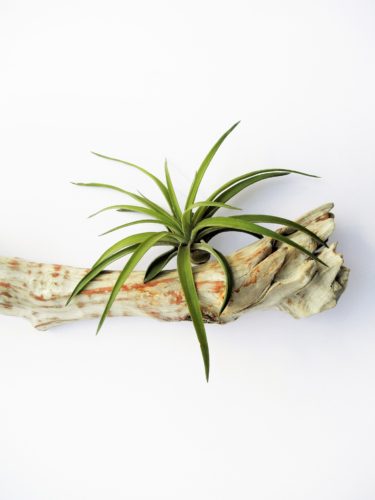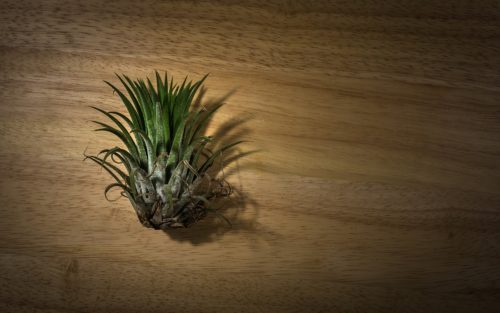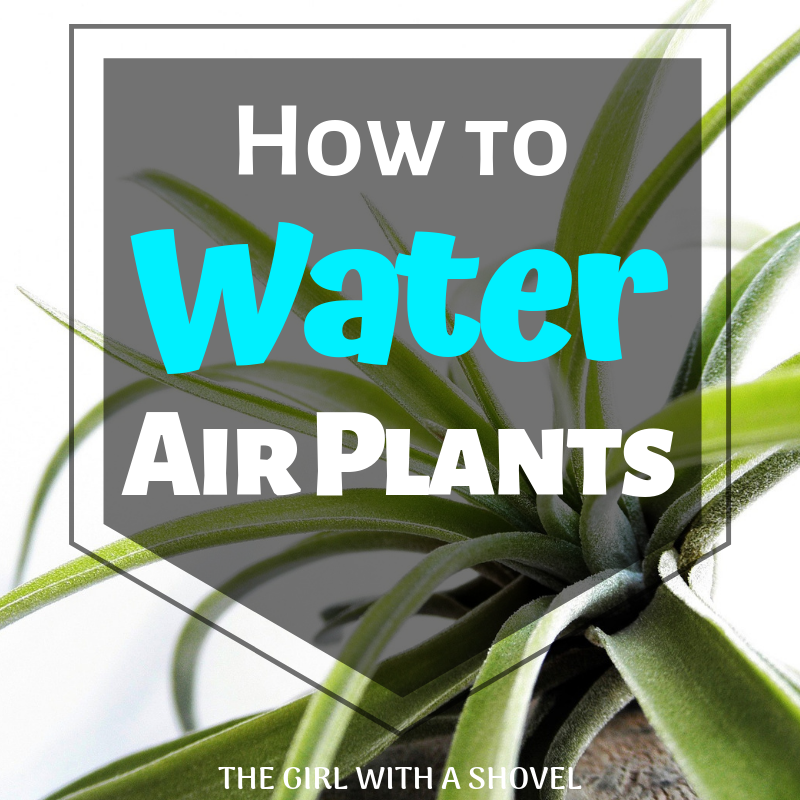Hey everyone! I know that we all LOVE air plants, but how the heck do you water something without any roots or any soil?!?! Well today I’m going to tell you exactly how to water your air plants so they stay happy and thriving!
Now there are two different methods. First is if your air plant is mounted/hot glued/fixed in any way to it’s stand. The second method (which is the preferred method) is for if your air plant is separate and can be removed from its mount, or if the mount is waterproof. So keep reading and use whichever method applies to you! But first, before you learn HOW to water your air plants, you need to make sure you’re using the correct TYPE of water…
If you want overall care tips for your air plant, check out my post here on air plant care!
Want to boost your air plant collection?! You can get some awesome air plants here!
**Note: This post contains affiliate links, which if purchased, I will receive a portion of the profits at no extra cost to you. This helps me to keep providing you with such awesome information!**
What Kind of Water to Use for Air Plants
Unlike most other houseplants, air plants DON’T like distilled water! If it’s a choice between distilled or tap water, go with tap water every time! The main harm with tap water is its chlorine. But for this, you can simply leave your water out for about 30 minutes to allow the chlorine to dissipate. This should be your easiest choice of water.
To go to the next level with your watering, choose a natural source, such as rain water, pond water, or lake water. While the rain water is what your plant is used to in its natural habitat, spring water, pond water, or lake water can also be extremely good for your air plants because it is usually rich in nutrients. Another alternative to these is if you have an aquarium. Aquarium water can also be highly beneficial to air plants as your air plant can get added nutrients from this water as well.
The only recommendation that I have, however, is if you use one of these water sources that already contains nutrients, then hold off on the fertilizer. If you use both, then it could potentially be too much for your little guy!
Now… on to the exact methods!
How to Water Air Plants Method 1: Fixed to a Mount
If your air plant is fixed to a mount or a stand, then the best way to water your plant will be through misting. This can be tricky though as most people who mist their air plants end up with rotted, dead plants. (Trust me! I know from personal experience!!!)
To correctly mist your air plant, the important thing is to think of it more like a shower than a misting. Spray it with a spray bottle or a misting bottle until the leaves are dripping with water. (I would recommend placing it in a sink or on a towel while you do this).
The next two tips are vital to avoid rotting your plant! These two tips are: turn your plant upside down, and give it good air circulation.
After you mist your plant you should place it upside down for 10-15 minutes to allow any excess water drain out of the plant. This is vital! Air plants aren’t like bromeliads that can keep water cupped in their leaves. If you do this to your air plant, it will most likely die on you. Instead, give it a good shake and place it in a position where all of the excess water can drain out.

This was my first big lesson with air plants. My first tillandsia was glued into a hanging glass globe. Little did I know that while I was spraying it down, all of the excess water was collecting in the bottom of those glued-in rocks, which was cradling the very center of my air plant… And let’s just say, it didn’t appreciate the long-term bath! So please remember to drain any excess water off of your air plant!!!
Next, make sure that your plant has good air circulation while it is drying. Normal indoor air circulation is fine, but if your plants are in glass terrariums, or in some of those glass globes (like my first air plant), then you’ll need to help it out a bit with a light fan. This will help to avoid any rotting from excess moisture.
Once it has finished soaking up all of the water and has completely dried, then you will be good to go! Simply follow this spray, shake, and circulate a couple times each week dependent on the temperature and the amount of indirect sunlight. Then watch your beautiful plant thrive!
How to Water Air Plants Method 2: Removable Air Plant
The soaking method, or the water bath method, is the preferred method of watering and I recommend purchasing your air plants separately from their container for this reason. It will be a lot easier for you and your plant in the long run. However, note that the xeric air plants, (most air plants with fuzzy leaves, such as the tillandsia tectorum, or the tillandsia xerographica) don’t like as much water and will do best with the misting method mentioned above.

So what you do for this situation is… once every 7-10 days, fill up a large bowl (or your sink or tub depending on how many air plants you own) with lukewarm water and place your air plants inside. Leave them to soak for several hours. Your goal here is to give your plants a good soak. Let them absorb as much water as they possibly can. I’ve heard of some people leaving their air plants to soak for up to twelve hours!
After they are done soaking, then you NEED to place them upside down on a towel or dish cloth to drain. Let them drain for about 4 hours, or until they are completely dry. If you live in a humid climate, you can also speed up the drying process by placing a fan nearby to increase air circulation.
After the plant is completely dry, then it is ready to place back on its stand and wait anther 7-10 days to water it again. If the tips begin to turn brown, lightly mist your plant a few times during the week, or increase your watering frequency.
How Often Do I Water my Air Plant?
To know how often to water your air plant, you will need to consider several different factors. First, it will help if you know the genus tillandsia that you have. This will help you know if it comes from a humid environment, like south america, or if it comes from a more arid climate, like found in central america. Then, factoring in how much indirect light it is receiving, you can start off with an estimate of whether it would like more frequent or less frequent waterings. A good rule of thumb is to give your air plant small amounts of water. Then, if the tips of the leaves begin to brown, you will know to slightly increase your watering.
I hope this helps! Let’s keep our air plants happy and well-watered (but not rotting!!!) And if you have any questions or comments, feel free to join the Facebook group, Houseplants for Plant Killers or follow me on Youtube! I love hearing from you!
Happy Digging!
Frequently Asked Questions:
How Often do Air Plants Need to be Watered?
The frequency of water will change with both the time of year, the indoor humidity levels, and how much light your plant is getting. As a general rule of thumb, however, you should expect to give your air plant a good soak every 7 to 10 days.
Can you Soak Air Plants in Tap Water?
Yes. You can use tap water to soak your air plants. The best practice, though is to fill your bucket of water, then leave it out for at least 15-30 minutes to let the chlorine evaporate out. This will be much healthier for your plant without you sacrificing too much of your time.
Do Air Plants Need Sun?
Yes. They need sunlight. But not all tillandsia species do well with DIRECT sunlight. Instead, they do much better with lots of indirect, bright light. In general, if your plant has a lighter, pale color, then it will do better with more sun. If your plant is more vibrant in color, then it will most likely be fine in lower light or fluorescent light conditions.
How do you Water an Air Plant without Soaking It?
To water an air plant without soaking it, you can use the spray/misting method mentioned above. This will require more frequent watering, but is necessary for plants that are secured to a non-waterproof base. If the spraying is still getting too much water on the plant stand, however, it would be better off to gently remove the air plant and soak once per week as recommended.

